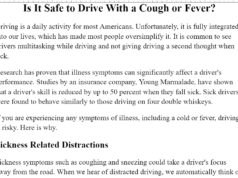SPONSORED CONTENT
Many accidents are preventable and could have been avoided if one or both parties exercised caution. When an individual’s negligence results in an accident leading to injuries or death, the injured parties receive compensation.
According to a report, 90 percent of all accidents can be traced to human error or negligence. If you are involved in a car accident, reaching out to a car accident attorney will help ensure that you get the needed compensation.
Building a Solid Negligent Claim
To build a solid negligent claim, the victim must provide evidence to validate their claim. Without this evidence to support your claim, getting compensation for the injuries may be challenging.
The evidence provided must be able to prove all of the following:
#1. There Was a Duty of Care
The accident victim must prove that the driver in question has a duty of care toward them. Without establishing a duty of care, it will be difficult to establish negligence. Every driver has a duty of care towards other road users. Therefore, they are expected to adhere to road regulations to ensure the safety of other road users.
#2. There was a Breach of Responsibility of Care
The victim must prove that the at-fault party failed to carry out their duty of care towards them. This breach of responsibility can result in reckless driving or failure to take precautionary measures, resulting in accidents.
#3. The Negligence Led to the Accident
While a driver may have failed to uphold their duty of care towards other road users, the victim must prove that the negligence contributed directly or indirectly to the accident. Accident victims suffer both economic and non-financial losses. Their ability to tie the losses to the accident increases the possibility of getting compensation.
#4. The Accident Led to Damages
If the damages suffered by the victim did not result from the negligence, then it will not be possible to establish liability. You will be required to support your claims with documents which may include receipt of medical bills, documents of vehicle repairs, and documentation of lost wages due to the injuries.
Sometimes, the damage suffered by the victim may be non-economical. A typical example of non-economic damage is the victim’s emotional pain due to the injuries. The judge determines the monetary value for this type of damage.
#5. You Have Less than 50 Percent Liability
In an accident case, some states operate with the comparative liability rule regarding negligence. This rule would compensate the victim even if their negligence contributed to the accident. However, the compensation paid is proportional to the percentage of liability.
In other words, if an individual has 30 percent liability, what it means is that the amount to be paid out to them will be reduced by 30 percent. Where the comparative liability is practiced, an individual will forfeit their compensation if their liability is up to 50 percent.
Conclusion
Proving negligence in a car accident can be complex. While you can process your claim all by yourself, you can increase the success rate by engaging the services of a competent accident attorney who will help gather relevant evidence and represent you in a manner that will advance your case.











